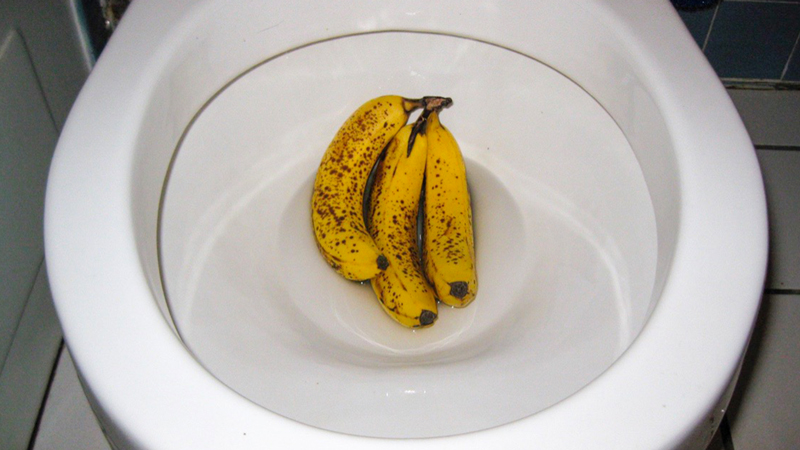Are You Allowed to Flush Food Down the Toilet?
Are You Allowed to Flush Food Down the Toilet?
Blog Article
Do you find yourself hunting for advice concerning Flushing Food Down the Toilet??

Introduction
Lots of people are usually faced with the issue of what to do with food waste, especially when it involves leftovers or scraps. One usual question that develops is whether it's okay to flush food down the commode. In this short article, we'll delve into the reasons people could take into consideration purging food, the consequences of doing so, and alternate approaches for correct disposal.
Reasons why individuals could think about flushing food
Absence of recognition
Some individuals may not know the possible injury brought on by purging food down the toilet. They might mistakenly believe that it's a harmless method.
Ease
Flushing food down the commode may appear like a quick and simple service to getting rid of unwanted scraps, especially when there's no close-by trash can offered.
Laziness
Sometimes, individuals may just pick to flush food out of sheer negligence, without thinking about the consequences of their actions.
Consequences of flushing food down the bathroom
Environmental influence
Food waste that winds up in waterways can contribute to pollution and damage marine ecosystems. Furthermore, the water utilized to purge food can strain water sources.
Pipes problems
Flushing food can cause stopped up pipes and drains, causing expensive plumbing repair services and inconveniences.
Types of food that must not be purged
Fibrous foods
Foods with coarse structures such as celery or corn husks can obtain tangled in pipelines and cause clogs.
Starchy foods
Starchy foods like pasta and rice can soak up water and swell, causing obstructions in pipes.
Oils and fats
Greasy foods like bacon or food preparation oils need to never ever be flushed down the toilet as they can solidify and create blockages.
Appropriate disposal techniques for food waste
Utilizing a waste disposal unit
For homes furnished with waste disposal unit, food scraps can be ground up and flushed with the pipes system. Nonetheless, not all foods appropriate for disposal in this way.
Recycling
Certain food product packaging materials can be reused, reducing waste and reducing environmental influence.
Composting
Composting is an eco-friendly way to throw away food waste. Organic products can be composted and used to enhance soil for horticulture.
The relevance of correct waste management
Minimizing ecological damage
Proper waste management methods, such as composting and recycling, help reduce pollution and maintain natural deposits for future generations.
Securing plumbing systems
By staying clear of the technique of flushing food down the bathroom, property owners can avoid costly pipes fixings and preserve the honesty of their plumbing systems.
Conclusion
To conclude, while it might be appealing to purge food down the toilet for ease, it is essential to understand the prospective effects of this action. By taking on appropriate waste monitoring methods and dealing with food waste responsibly, people can contribute to healthier pipes systems and a cleaner atmosphere for all.
FLUSH FOOD DOWN THE TOILET?
FLUSHING FOOD CAN CAUSE BLOCKED DRAINS IN YOUR HOME
All of the plumbing fixtures in your home are connected to the same sewer pipe outside of your home. This outdoor sewer pipe is responsible for transporting all the wastewater from your home to the Council sewer mains. Even small pieces of food that go down the kitchen sink can cause problems for your sewer. It should therefore be obvious that flushing larger bits of food, such as meat, risks a clog in either the toilet itself or the sewer pipes. Flushing greasy food is even more problematic because oil coagulates when it cools, coating the interior lining of your pipes.
THE TOILET IS NOT A BIN
Food isn’t the only thing that people shouldn’t be flushing down the toilet. People use the toilet to dispose of all kinds of things such as tampons, makeup wipes, dental floss, kitty litter and even underwear. Water goes to great lengths to educate residents about the high costs and stress placed on wastewater treatment systems simply from people flushing the wrong stuff down the toilet. It costs taxpayers millions of dollars each year, and homeowners thousands in blocked drain repairs.
FLUSHING FOOD IS A WASTE OF WATER
Flushing food is a waste of our most precious resource - water. In June this year Level 1 water restrictions were introduced to protect water supply from drought conditions. Much of New South Wales continues to be affected by prolonged drought with recent figures revealing up to 97 per cent of the state remains in drought. Depending on whether you have a single or dual flush toilet, every single flush uses between five and 11 litres of water. In the current climate this is a huge amount of water to be wasting on flushing food that should be placed in the bin (or better yet, the compost).
https://www.jabplumbingsolutions.com.au/blog/can-you-flush-food-down-the-toilet

I discovered that blog posting about Is it safe to flush food (especially rice) down the toilet? while doing a lookup on the web. Those who appreciated our post if you please be sure to share it. Many thanks for taking the time to read it.
Click Here To Read More Report this page